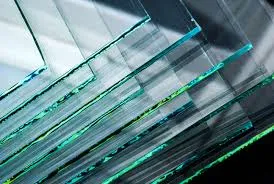Exploring the Art of Coloured Textured Glass
Coloured textured glass is a captivating medium that has been utilized in art and architecture for centuries. Combining vibrant hues and unique tactile qualities, this form of glass captures light in dynamic ways, creating a sensory experience that is both visual and tactile. The intersection of color, texture, and light transforms ordinary spaces and objects into extraordinary works of art, conveying emotions, stories, and a sense of place.
The History of Coloured Textured Glass
The origins of glass-making can be traced back to ancient Mesopotamia around 2000 BC, but it was during the Roman Empire that coloured glass began to flourish. Techniques involving the addition of metal oxides to glass mixtures allowed artisans to create a rainbow of colours. Over the centuries, stained glass windows became a prominent feature in cathedrals and churches, serving not only as decoration but as a medium to educate the masses on biblical stories.
In the 19th and 20th centuries, artists and glassmakers experimented with textured glass, open to new possibilities afforded by industrial processes. The creation of integrated textures introduced visual depth and complexity, allowing for innovative applications in architecture and design. Today, coloured textured glass is experiencing a resurgence, marrying traditional craftsmanship with contemporary design.
The Artistry and Techniques
Creating coloured textured glass involves several techniques that contribute to its distinct character
. The glass can be coloured during the melting process by adding various metal oxides, while texturing can be achieved by pressing, rolling, or creating molds. This process requires both technical skill and artistic vision, as artisans strive to achieve the desired effects.
One popular method is the use of cast glass, where molten glass is poured into a mold. The surface of the mold can be designed to create intricate patterns or textures, adding a tactile element to the final piece. Alternatively, etched or sandblasted glass features designs that are created on the surface, allowing for both transparency and depth.
coloured textured glass
Moreover, layered glass techniques involve stacking sheets of glass of different colours and textures, which can be fused together at high temperatures. This results in luminescent pieces that change appearance depending on the angle of light and the viewer's perspective. The combination of these techniques allows artists to explore endless creative possibilities, making each piece unique.
Applications in Art and Architecture
Coloured textured glass has found its way into various applications, from decorative art pieces to large-scale architectural installations. In contemporary architecture, it serves not only as a design element but also as a functional component, providing privacy while allowing natural light to filter through. Public buildings, such as museums and libraries, incorporate colourful glass panels to create inviting atmospheres that enhance the overall visitor experience.
In the realm of fine art, artists use coloured textured glass to create sculptures, wall installations, and wearable art. The interplay of colour and light can evoke emotions, transforming spaces into immersive environments. Artists such as Dale Chihuly have gained international recognition for their pioneering works in this medium, pushing the boundaries of what can be achieved with glass.
The Future of Coloured Textured Glass
As sustainability becomes an increasingly important consideration in design, the glass industry is evolving to incorporate eco-friendly practices. Innovations such as recycled glass and alternative energy sources for manufacturing are gaining traction, creating a new landscape for future artisans.
Moreover, digital technology is opening up new frontiers in glass design. Computer-aided design (CAD) software allows for precision in creating intricate patterns that can be translated into physical forms, while 3D printing techniques evolve and offer novel ways to create textured surfaces.
In conclusion, coloured textured glass is a remarkable fusion of artistry and craftsmanship that resonates with both historical significance and cutting-edge innovation. Its ability to enhance our environment, evoke emotions, and tell stories makes it a continually relevant medium in the world of art and design. As we move forward, the possibilities for coloured textured glass are boundless, promising a bright future for this enchanting and tactile material.
 Afrikaans
Afrikaans  Albanian
Albanian  Amharic
Amharic  Arabic
Arabic  Armenian
Armenian  Azerbaijani
Azerbaijani  Basque
Basque  Belarusian
Belarusian  Bengali
Bengali  Bosnian
Bosnian  Bulgarian
Bulgarian  Catalan
Catalan  Cebuano
Cebuano  Corsican
Corsican  Croatian
Croatian  Czech
Czech  Danish
Danish  Dutch
Dutch  English
English  Esperanto
Esperanto  Estonian
Estonian  Finnish
Finnish  French
French  Frisian
Frisian  Galician
Galician  Georgian
Georgian  German
German  Greek
Greek  Gujarati
Gujarati  Haitian Creole
Haitian Creole  hausa
hausa  hawaiian
hawaiian  Hebrew
Hebrew  Hindi
Hindi  Miao
Miao  Hungarian
Hungarian  Icelandic
Icelandic  igbo
igbo  Indonesian
Indonesian  irish
irish  Italian
Italian  Japanese
Japanese  Javanese
Javanese  Kannada
Kannada  kazakh
kazakh  Khmer
Khmer  Rwandese
Rwandese  Korean
Korean  Kurdish
Kurdish  Kyrgyz
Kyrgyz  Lao
Lao  Latin
Latin  Latvian
Latvian  Lithuanian
Lithuanian  Luxembourgish
Luxembourgish  Macedonian
Macedonian  Malgashi
Malgashi  Malay
Malay  Malayalam
Malayalam  Maltese
Maltese  Maori
Maori  Marathi
Marathi  Mongolian
Mongolian  Myanmar
Myanmar  Nepali
Nepali  Norwegian
Norwegian  Norwegian
Norwegian  Occitan
Occitan  Pashto
Pashto  Persian
Persian  Polish
Polish  Portuguese
Portuguese  Punjabi
Punjabi  Romanian
Romanian  Russian
Russian  Samoan
Samoan  Scottish Gaelic
Scottish Gaelic  Serbian
Serbian  Sesotho
Sesotho  Shona
Shona  Sindhi
Sindhi  Sinhala
Sinhala  Slovak
Slovak  Slovenian
Slovenian  Somali
Somali  Spanish
Spanish  Sundanese
Sundanese  Swahili
Swahili  Swedish
Swedish  Tagalog
Tagalog  Tajik
Tajik  Tamil
Tamil  Tatar
Tatar  Telugu
Telugu  Thai
Thai  Turkish
Turkish  Turkmen
Turkmen  Ukrainian
Ukrainian  Urdu
Urdu  Uighur
Uighur  Uzbek
Uzbek  Vietnamese
Vietnamese  Welsh
Welsh  Bantu
Bantu  Yiddish
Yiddish  Yoruba
Yoruba  Zulu
Zulu 

